These 6 flawed TCK diagrams are a pet peeve. Flawed Third Culture Kid (TCK) diagrams trigger me. I confess I get disturbed when individuals and organizations teach flawed diagrams of the TCK profile. I’m also a bit embarrassed to admit it, but I have a growing collection of what I consider erroneous variations of the TCK profile. But unlike a mint-error coin that holds great intrinsic value, my hoarded collection of misfit diagrams only has value in my head. But maybe, by sharing my “precious” (yes, that was Sméagol’s voice you heard) with others, there may be some redeeming value in them after all.
Incorrect/Flawed models of the TCK profile hit me particularly hard because so few people in the world, including many TCKs, really know what a TCK is. When inaccurate information abounds out in the world and cyberspace, despite good intentions of the authors, it frustrates me. Poor models convey incorrect or incomplete information about the richness and uniqueness of the TCK profile.
In part 1 of this series, Sheryl shared the origins and the development of the Third Culture Kids/Global Nomad definition. In this second offering, I will open up my vault of flawed diagrams. Don’t worry! I will intentionally withhold sources–the identities of those who don’t quite get it are safe with me! I will unpack the good intentions and unfortunate missteps in their modifications of the original TCK Venn Diagram developed by Ruth Van Reken.
Lest I spare any criticism and analysis, in part 3 of this series, I will unpack where there is room for improvement of the juggernaut model–especially in light of the current cultural sensitivity movement. For any who dare to continue the journey, in part 4 I will risk adding my own name to contributors of flawed TCK diagrams, and I will put forth for your consideration a new model that incorporates a better reflection of cultural blends while simultaneously helping to illustrate the varying degrees of “TCKness” that are reflected in the Global Nomad community.
It’s amazing to me in this age of globalization how quickly misinformation spreads. While the internet has the potential to help people track down original sources in just a few clicks, why does it seem that the misinformation goes viral? I’ve seen so many share or repost some flawed graphics instead of the original TCK Venn diagram. So in order to help us identify the counterfeits, let us behold the original in all its glory and splendor.
The Van Reken Third Culture Model
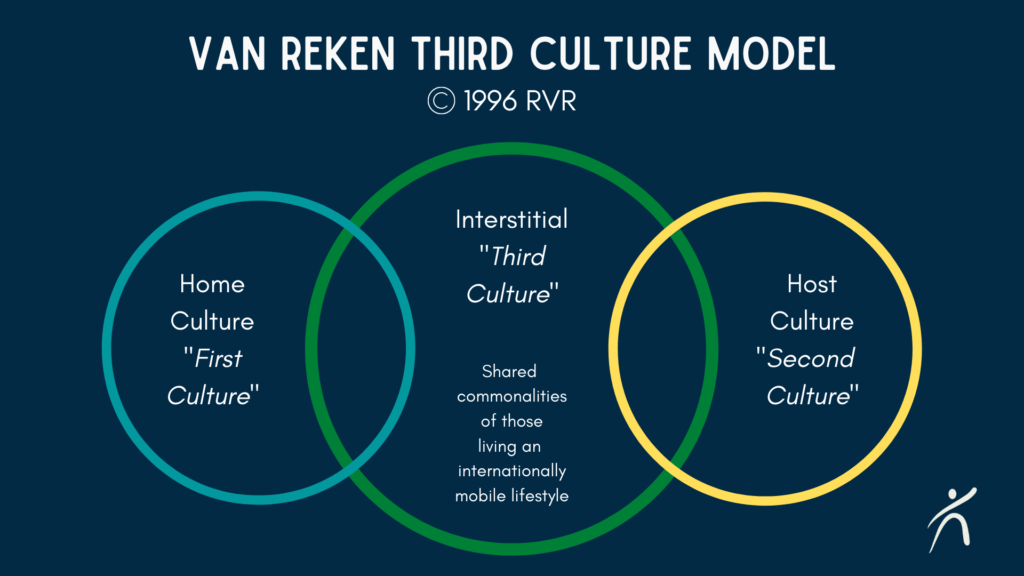
Despite being widely attributed to David Pollock (former Executive Director of Interaction International), this version of the Venn Diagram was actually developed and copyrighted by Ruth Van Reken in 1996. Though widely used by Ruth Van Reken and David Pollock as they presented on the topic to international schools and businesses, it was not included in the 1999 edition of the Third Culture Kids: The Experience of Growing up Among Worlds but did get included in the second edition.
I will dive into the particular strengths of this model in part 3 of this series; I will also address what I see as an issue of concern. The general diagram has stood for years depicting graphically the “culture between cultures,” as Ruth Useem called it, the TCK culture. The key components of the Van Reken Third Culture Model are as follows:
1. Two distinct cultures of influence
2. A third culture which captures pieces of each culture yet is unique from either.
So with Van Reken’s graphic seared into our minds, I am now prepared to crack the vault of my collection, and with no malice or ill will, share my proclivity of picking apart what I consider flawed models of the Third Culture.
6 Flawed TCK Diagrams
The Most Popular Flawed Model
Full disclosure: Interaction International’s own David Pollock taught this version to schools in the ’90s before it was corrected and refined to its current version. I have talked to more than one person who was reluctant to let go of this two circle model because they assure me they have mimeographed handouts of this model they received at one of his presentations. The idea that Dave could refine his ideas and presentations somehow escapes them. For them, it seems to boil down to “Dave said it. I believe it. It is finished.”
Let me begin by sharing the most popular misconstrued version of the Third Culture Model. I took this model from a major Christian missionary sending agency’s website. (Thankfully, they removed it after several years of bringing it to their attention.) This flawed model generally consists of two overlapping circles and is labeled as follows: As we dive into the two circle model, I would also like to pause and file a formal complaint. Each year when I unpack the TCK profile at Interaction International’s Transit Lounge (our cross-cultural transition seminars for teens), I ask the students to explain what they know about the Third Culture and TCKs. Without fail, four out of five students who have had previous exposure to the TCK profile also depict the profile in this flawed manner. Whether the perpetuation of this adulterated version is due to it being taught incorrectly or teens only halfway listening, this flawed model needs to take a long walk off a short pier. Rant over–or at least suspended till the next Transit Lounge.
As we dive into the two circle model, I would also like to pause and file a formal complaint. Each year when I unpack the TCK profile at Interaction International’s Transit Lounge (our cross-cultural transition seminars for teens), I ask the students to explain what they know about the Third Culture and TCKs. Without fail, four out of five students who have had previous exposure to the TCK profile also depict the profile in this flawed manner. Whether the perpetuation of this adulterated version is due to it being taught incorrectly or teens only halfway listening, this flawed model needs to take a long walk off a short pier. Rant over–or at least suspended till the next Transit Lounge.
A Middle School Math Lesson
For those who sent middle school math knowledge into oblivion’s circular file, I will refresh your memory on the finer points of a Venn diagram. A Venn diagram depicts information by showing the relationship between the components of the categories. Shared traits overlap/intersect while unrelated traits remain separated. For those not familiar with a Venn Diagram, this illustration will help:
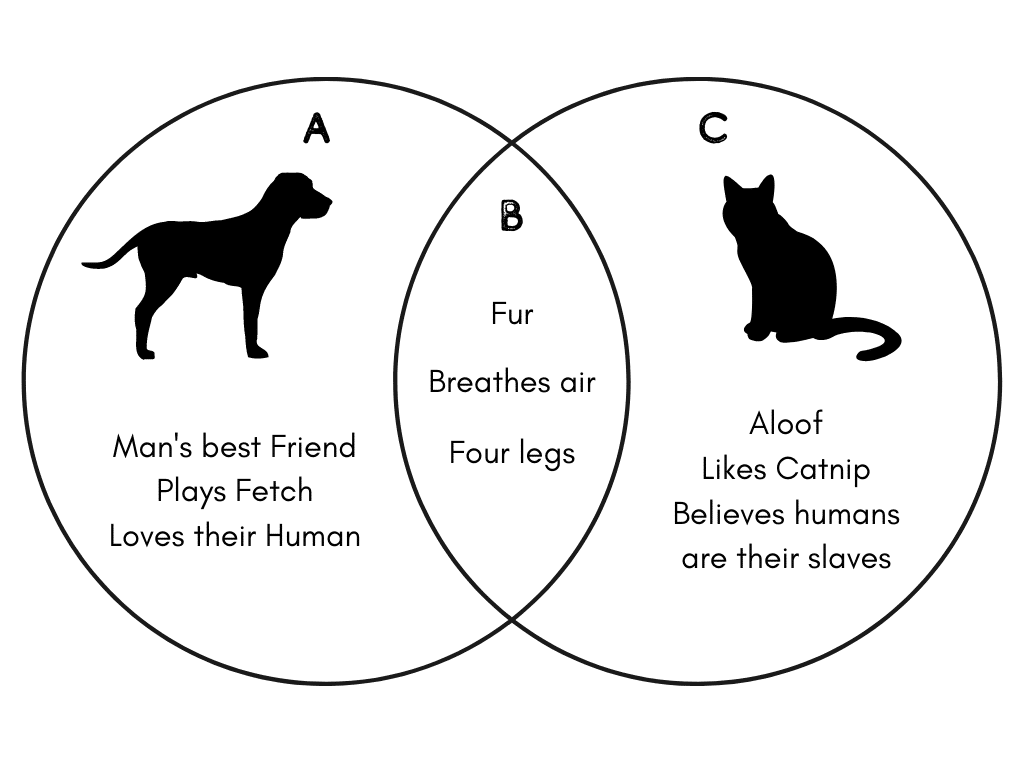 This graphic can then be broken into three sections: (A) characteristics unique to a dog, (C) characteristics unique to a cat, and (B) characteristics common to both. For example in area A you would include traits like: Man’s best friend, enjoys playing fetch, loves their human. Area B would include common traits to both animals which could include: four legs, covered in fur, breathes oxygen. Finally in area C you might include traits unique to a cat like: aloof, likes catnip, and believes humans are their slaves. (Can you tell I’m a dog person?!)
This graphic can then be broken into three sections: (A) characteristics unique to a dog, (C) characteristics unique to a cat, and (B) characteristics common to both. For example in area A you would include traits like: Man’s best friend, enjoys playing fetch, loves their human. Area B would include common traits to both animals which could include: four legs, covered in fur, breathes oxygen. Finally in area C you might include traits unique to a cat like: aloof, likes catnip, and believes humans are their slaves. (Can you tell I’m a dog person?!)
Back to the Flawed TCK Model
Applying the understanding of a Venn diagram to this flawed two circle Third Culture Kid graphic, we see its failure when we break the diagram into three sections. The middle section, Third Culture, is only composed of that which both the Passport and Host Cultures have in common. Practically speaking, if the passport culture drinks Coke, and the host culture drinks Coke, then all Third Culture Kids must drink Coke. Of course, this is ridiculous. Some drink Inca Kola!
The two overlapping circle model fails to demonstrate the significance of the interstitial culture of a Third Culture Kid. In an attempt to depict that the Third Culture is born out of exposure to two other cultures, it unfortunately falls one circle short of a gold medal and, therefore, needs to be disqualified. If the third circle were added properly, it would then pose a question of copyright infringement on Ruth Van Reken ’s work. However, if you’ve had the opportunity to get to know Ruth, you know she’s gracious and generous–but it’s still her work.
A Third Circle
However, simply adding another circle does not solve the problem. In my collection of flawed models, many have added a third circle incorrectly. They, unfortunately, created new ways to pervert Van Reken’s model, thus misconstruing Ruth Useem’s original work on TCKs.
I don’t know where the illegitimate variations of the three overlapping circles started, but I’ve seen them on TCK group sites, on news’ media, on Pinterest, and even on diplomatic websites. Again, to help protect the guilty, I’m withholding sources. (However, I’m sure you can find them in a Google search like I did.)
A Flawed Three Circle Venn Diagram
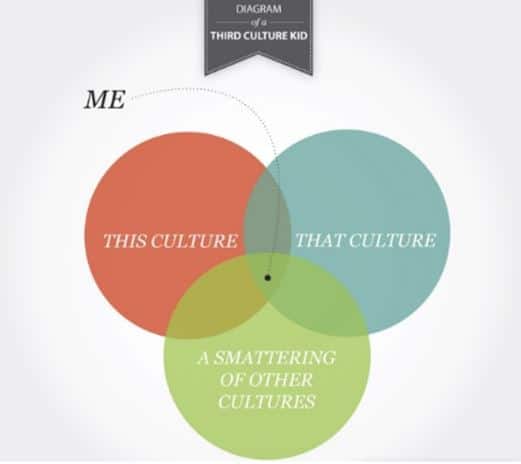
Let’s start with the positive on this graphic I found on a TCK website. I love that this model doesn’t make TCKness exclusively bi-cultural (passport culture/host culture). So many MKs and other TCKs I’ve worked with over the years were not exclusive to only two cultures. I would be willing to venture that many TCKs are influenced by three or more cultures in their adolescence due to their high mobility and their deep friendships spanning many cultures.
While this diagram makes room for the beauty of multiple cultural influences, once again the diagram fails to understand the nuances of a Venn Diagram. By depicting “Me” (aka at TCK) at the intersection of all the cultures, one ends up with the same problem we had with the two circle diagram. The Third Culture is visually depicted as only being what is in common with all cultures. Again, this simply does not accurately depict Ruth Useem’s work on Third Culture Kids.
No 4th Culture Kids
Allow me a sidebar, if you will. There is no such thing as a Fourth Culture Kid. Or Fifth, Sixth, Seventh Culture Kid. TCKs sometimes like to flaunt their TCKness and one-up each other as being MORE Third Culture than the next TCK. There are many ways to score TCK points in this “game.” Having multiple passports earns you additional points. Having flown before you can walk- more points. The more countries you’ve been to–and especially the more countries you’ve LIVED in– a point for each. So count however many cultures you’ve lived in to whatever degree, but no matter how many cultures that have influenced you growing up, it still only creates a Third Culture.
I will dive into this fallacy of 4th Culture more in the fourth post where I share a new model that may help depict better why this doesn’t exist. But in short, the Third Culture IS a unique culture– like Canadian, Chinese or Libyan culture. It is a defined culture–it’s just one that lacks geography and a few other norms ascribed to other “regular” cultures. The Third Culture is a culture between cultures, thus no matter how many unique cultural influences one may have had, they are still just in the Third Culture. I believe that issue is part of the reason Norma McCaig introduced the term Global Nomad; she wanted to get away from this confusion.
More Flawed Three Circle Graphic
The following is another example from my library. This is from an organization working with a particular subset of TCKs. But just like the previous example from the TCK site, we have the same problem, just different labels. Also, there’s a redundancy in the black overlap of circles meant to represent a TCK. If the abbreviation is read as words, “Third Culture Kid Kid” needs the work of a good editor.
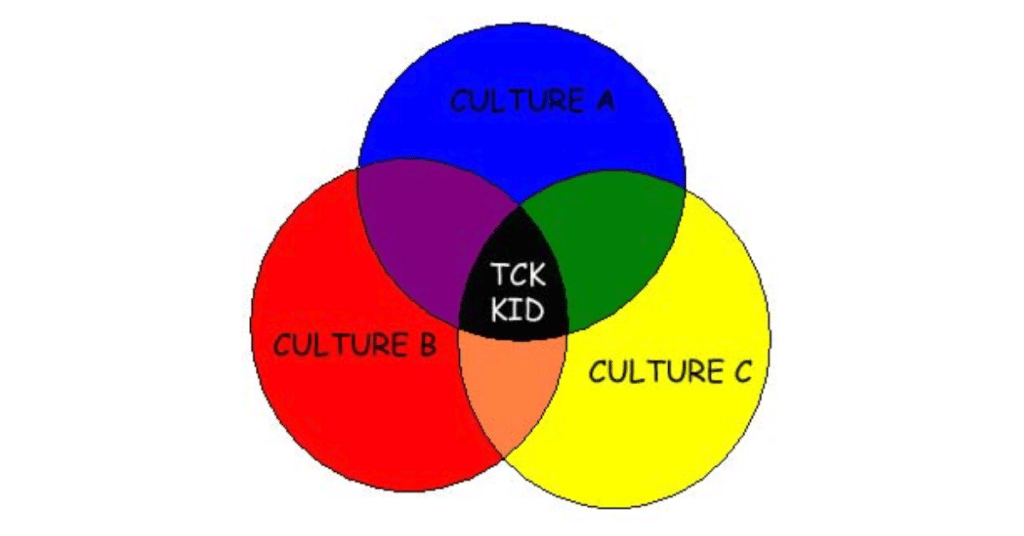
Parents’ Culture vs. Passport Culture
This next graphic I thought was aesthetically beautiful. I originally found this through a search on Pinterest. This version of the three overlapping circles recaptures the wording associated with the TCK profile but ends up with the issues of the previous examples. It depicts the TCK as being the commonality of all the cultures, instead of being influenced by all of those cultures and also an entirely separate third culture.

I find it interesting that in this model one of the circles is classified as “my parents’ culture” instead of “my passport culture.” In more than 20 years of working with TCKs, I have seen TCKs balk at the idea of their parents’ culture being called “home.” It is their parents’ home culture, not the TCK’s. The TCK’s home culture is the Third Culture. Their parents’ home culture often feels foreign to TCKs. The uncomfortable foreignness of a place their parents tell them is their “home” can stoke grief, loss, and confusion.
There are many other layers and possibilities that exceed the constraints of this series. But for TCKs harboring resentment or hostilities towards their “passport” country, I encourage them to give it the same amount of grace and cultural respect they give the other cultures they’ve been surrounded by.
This next flawed version of the Third Culture Profile was found on a UK independent news website and written by a self described TCK. Fortunately, the graphics do not load on this particular article anymore, but the associated article still articulates misconceptions of what a TCK is even without the graphic.
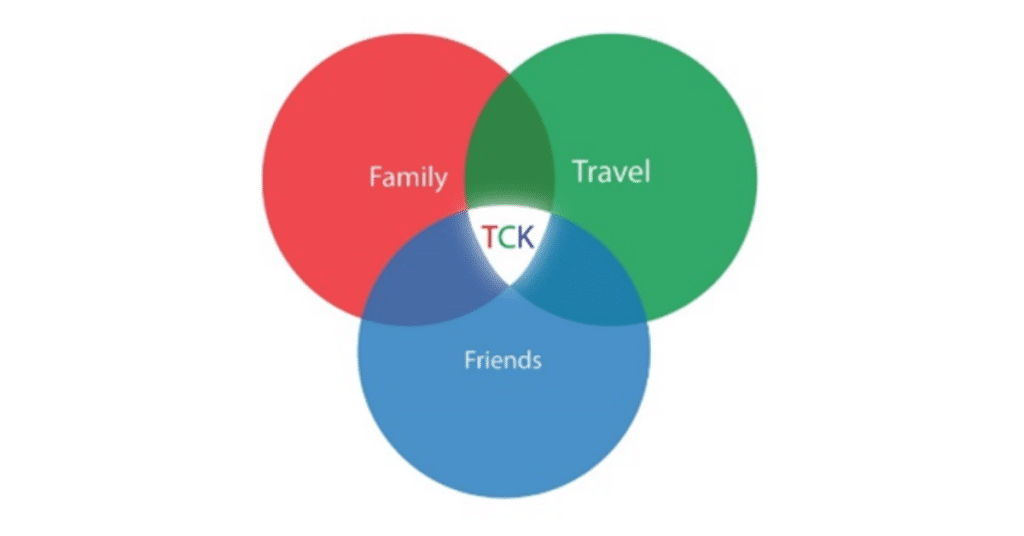
Sometimes when I see these various attempts like this one, I just have to take a deep breath. Maybe they had a deadline? Maybe they just heard about this term and wanted to share before having a chance to fully understand the term.
Yes, travel (what I can only guess the author is calling the TCK attribute of high mobility) is integral to creating the circumstance for an individual in developing their TCK identity and culture. But strictly speaking, the diagram comes to fruition only at the commonality of Family, Friends, and Travel. I’m not even sure what those three even have in common.
Again, this is far from an accurate portrayal of the TCK profile. Maybe the creator intended to say that all of these are parts of their TCK life, but this depiction is far too narrow.
The last of the 6 flawed diagram I would like to share from my collection was published in a psychological magazine by an individual with a Ph.D. It was reposted on no less than 3 other sites.
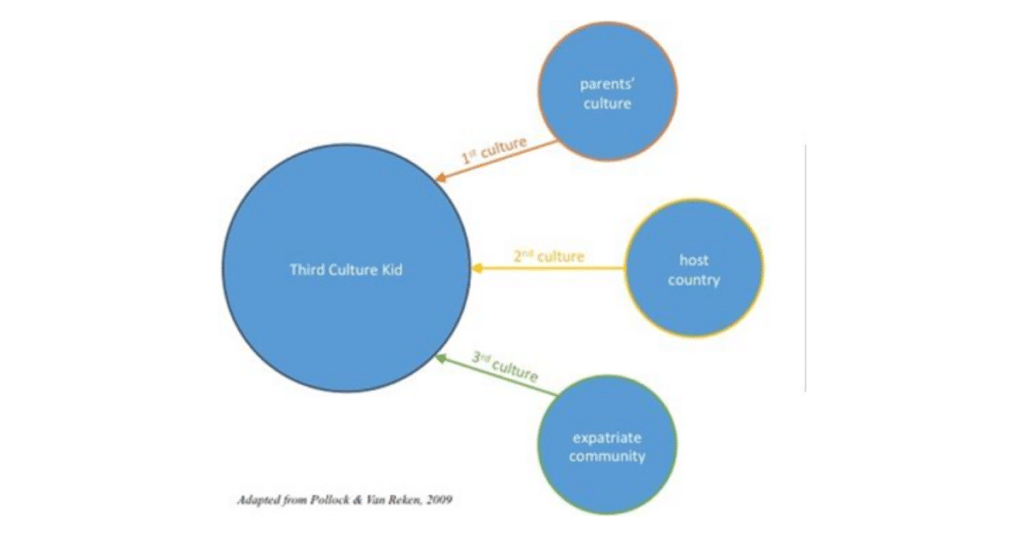
Now out of all my collection of flawed models, this one stands apart. It’s fascinating to me the original illustration even cites that it was adapted from Van Reken, quotes Van Reken’s definition, but appears to stumble on the wording of “Third Culture.” For me there are two subtle issues with this diagram.
The first is the confusion steaming from the green line labeled “3rd culture” and then having an additional circle labeled “Third Culture Kid.” It’s problematic to me using the same wording “third culture” in what I assume is two different ways. Duplication of the wording “third culture” causes confusion and detracts from what I believe was trying to be communicated.
The second issue is this diagram unfortunately lends to the heresy that a Third Culture Kid has three cultures influencing them. Sigh. It’s not that simple, people.
What is unique about this graphic is it doesn’t fumble into the problem of the other Venn Diagrams I’ve shared. There isn’t issues of mislabeling or inappropriately overlapping to show commonalities that do not exist. It’s also unique in acknowledging the expatriate community (culture). It deserves a few kudos in spite of its flawed nature.
Unfortunately, not all TCKs experience an expat culture living cross-culturally. An example would be a TCK boy from the Southern region of India living primarily in Northern India where his mother has been sent to direct a hospital. The boy may have little to no opportunity to interact with the expat community so this diagram would exclude him and many others from the Third Culture who rightfully belong there.
A Note to Future Researchers and Writers
If you are looking to work on a Masters or Undergraduate paper/project, an easy way to get your advisor impressed without actually having to be accurate, is to write on the Third Culture. Most professors will find it fascinating and enthralling without having the personal context to know if you’ve submitted inferior information or models. The abundance of half right models on the web, the scarcity of books with good content on the subject, and the lack of a central academic journal on Third Culture research, it will be hard to find accurate models and check your work. Unfortunately, I have seen this borne out in several papers that have come through my inbox.
Please don’t be this student. Put in the work. Do the research. Think. Don’t use one of these 6 flawed TCK diagrams in your work; don’t perpetuate flawed understanding.
Continued Thought
In the ever growing complexities of this world and the seemingly endless intricacies that exist in the TCK community, many attempts have been made to articulate, both in words and in graphics, this largely hidden global community. Despite my critiques of some of these models, I want to encourage continued thinking and experimentation on terminology, tools, and resources–and graphics.
My hope in examining these 6 flawed TCK diagrams is not to stir pointless academic discussion about meaningless minutia of how to graphically represent TCKs. Rather, I want to highlight the often overlooked and misunderstood central tenet of the Third Culture profile–that it is a culture distinct and unique on its own. It is a culture born out of countless potential variations of cross-culture exposure, yet still homogeneous.
As new waves of those working with TCKs are coming into their own, having clarity about the TCK profile will enable them to better develop resources and give a clearer voice to the Global Nomad community.
In my next installment in this series, I may commit TCK sacrilege through suggesting there is room for improvement in the legacy model Ruth Van Reken developed in the 1990s.
PS – If, perchance, you find in your journeys a new misfit diagram inaccurately portraying the TCK model… there’s always room in my collection for one more. Send it to me at bret.taylor@interactionintl.org.
Update-
Part 3: 2 Issues with the Third Culture Model has been posted
Part 4: The Adaptable TCK Model has been posted
Bret Taylor is the Interim Executive Director of Interaction International. He’s been working with MKs/TCKs since 1999. He’s co-host of TCK Live, directs the Transit Lounge programs, presents at MK/TCK Caregiver Training, chairs MKCS, and helps with Among Worlds, Interaction International’s magazine for and by Adult Third Culture Kids.

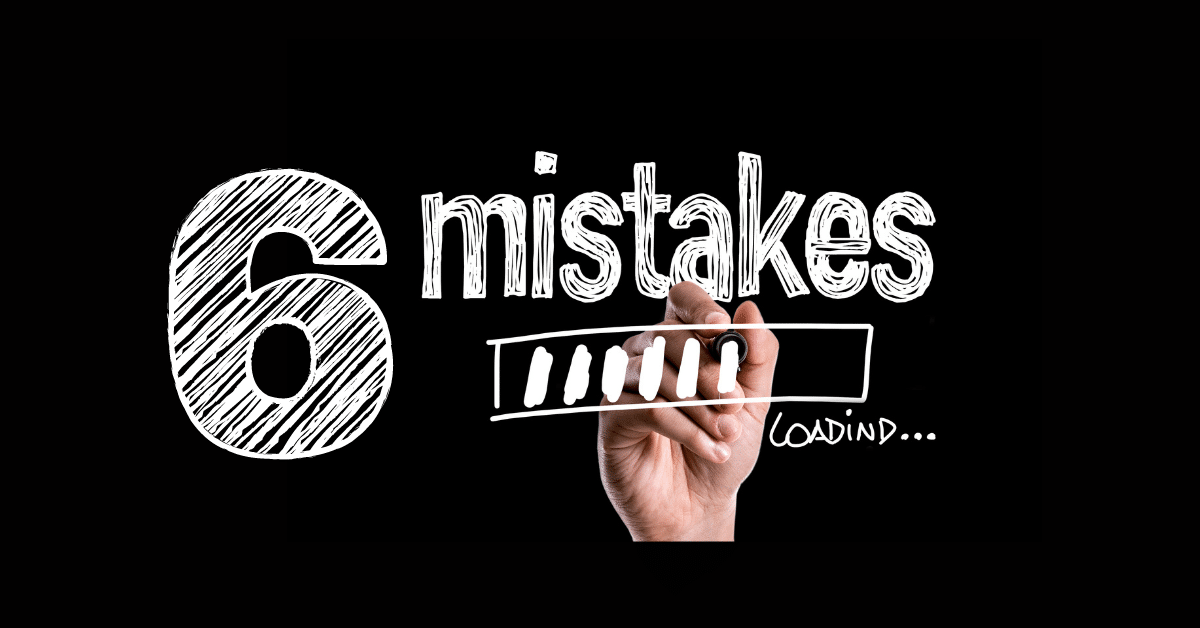
3 thoughts on “6 Flawed TCK Diagrams”